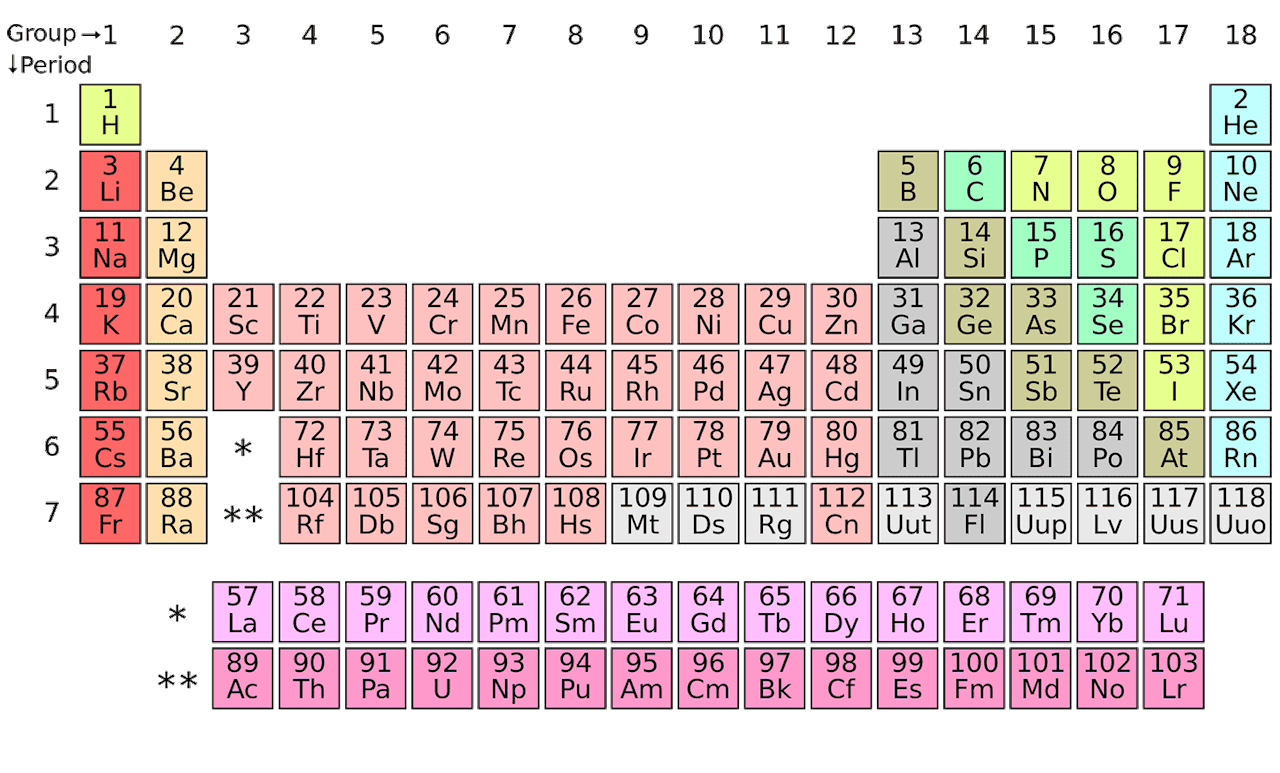

Wrapped for horizontal sanity, the vector we have to encode looks as follows. In the latter case, we simply replace the computed result with L or A. The output is then simply displayed in bijective base 18, unless this would display 6 3 (lanthanides) or 7 3 (actinides). To get the desired integer for an atomic number n, all we have to do is prepend 19 (hydrogen) to the differences and compute the sum of the first n elements of the resulting vector.

To map all lanthanides and all actinides, we'll consider all differences between two lanthanides or to actinides (e.g., La to Ce) to be 0. For example, the first is 1I b18 - 11 b18 = H b18 = 17 10, the second is 1 (as are all differences between consecutive elements of the unexpanded periodic table), the fourth ( B to Be) is 2D b18 - 22 b18 = B b18 = 11 10, and so on. To do this, we record the forward differences of the integers that represent the atoms. We start by mapping all atomic numbers we can to the corresponding integers, while mapping lanthanides and actinides to those that correspond to lanthanum ( 111 10 = 63 b18) and actinium ( 129 10 = 73 b18). For example, hydrogen corresponds to 19 10 = 11 b18, helium to 36 10 = 1I b18, and eka-radon/ununoctium/oganesson to 114 10 = 7I b18.

With the exception of lanthanides and actinides, the output will consist of an integer expressed in bijective base 18. J“” - join with (a workaround for no "flatten by 1")

(the locations of the runs of L's and A's) Μ - monadic chain separation (call the result x) ¤ - nilad followed by link(s) as a nilad: The program (shortened by substituting A, B, and C) : AṃBr2/ €"Cḃ7¤µ⁵,12Ṭœṗ "⁾LAṁ€15¤j“”$⁺³ị - Main link: atomicNumberĪṃB - number A with digits B:
#Periodic table chemistry 201 code#
“¢£Æ¥Ø‘ - a list using Jelly's code page: (call this B)
#Periodic table chemistry 201 full#
Since there are only 118 possible inputs, a full list of the expected inputs and outputs is given below.Ĭreated by hand, let me know if there's a mistake! You may use any programming language, but note that these loopholes are forbidden by default. You may write a program or a function and use any of the our standard methods of receiving input and providing output. Given the atomic number of an element in the range output the group and period, of that element as given by the following Periodic Table Of Elements.įor elements in the Lanthanide and Actinide series, (ranges and ), you should instead return L for the Lanthanides and A for the Actinides


 0 kommentar(er)
0 kommentar(er)
